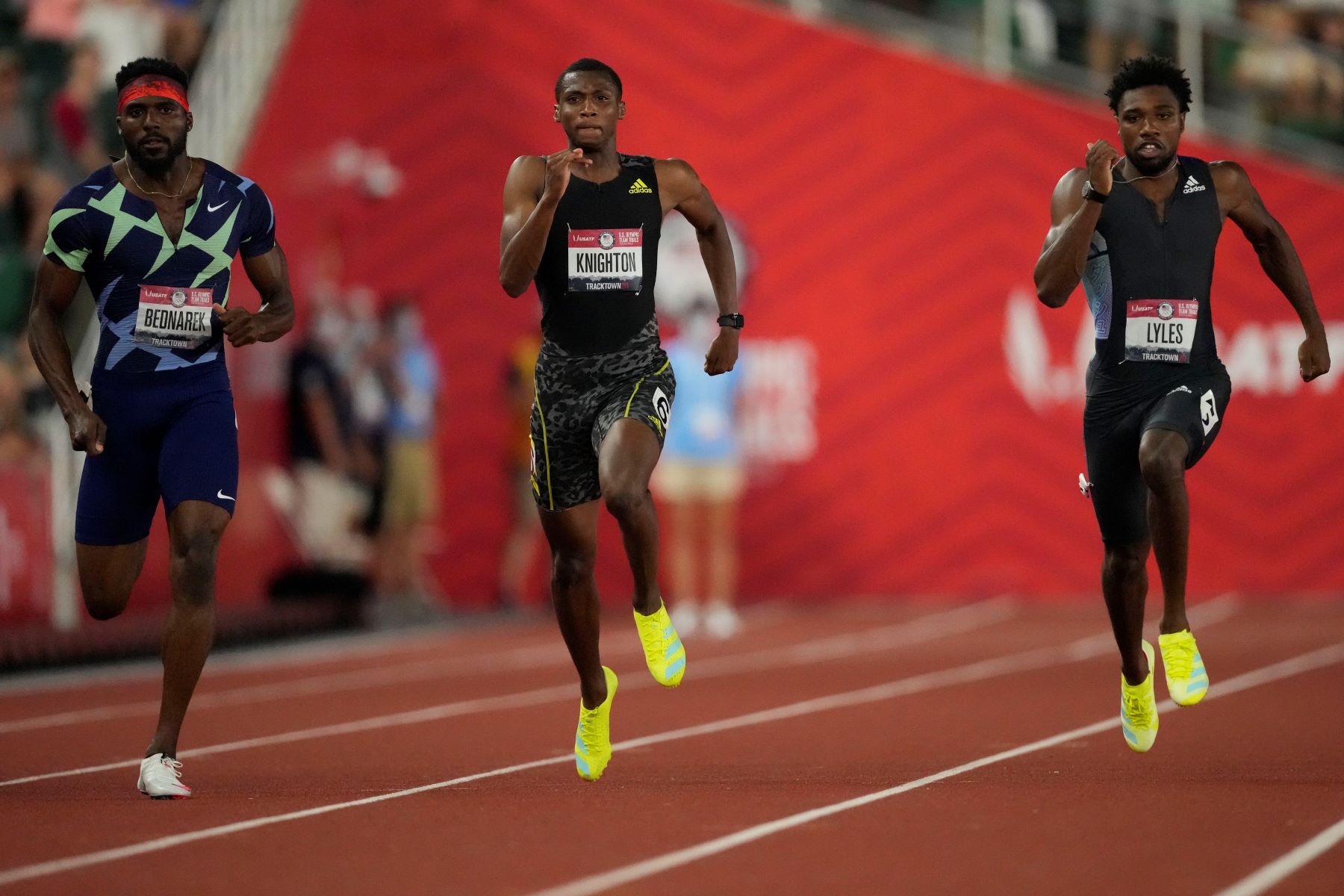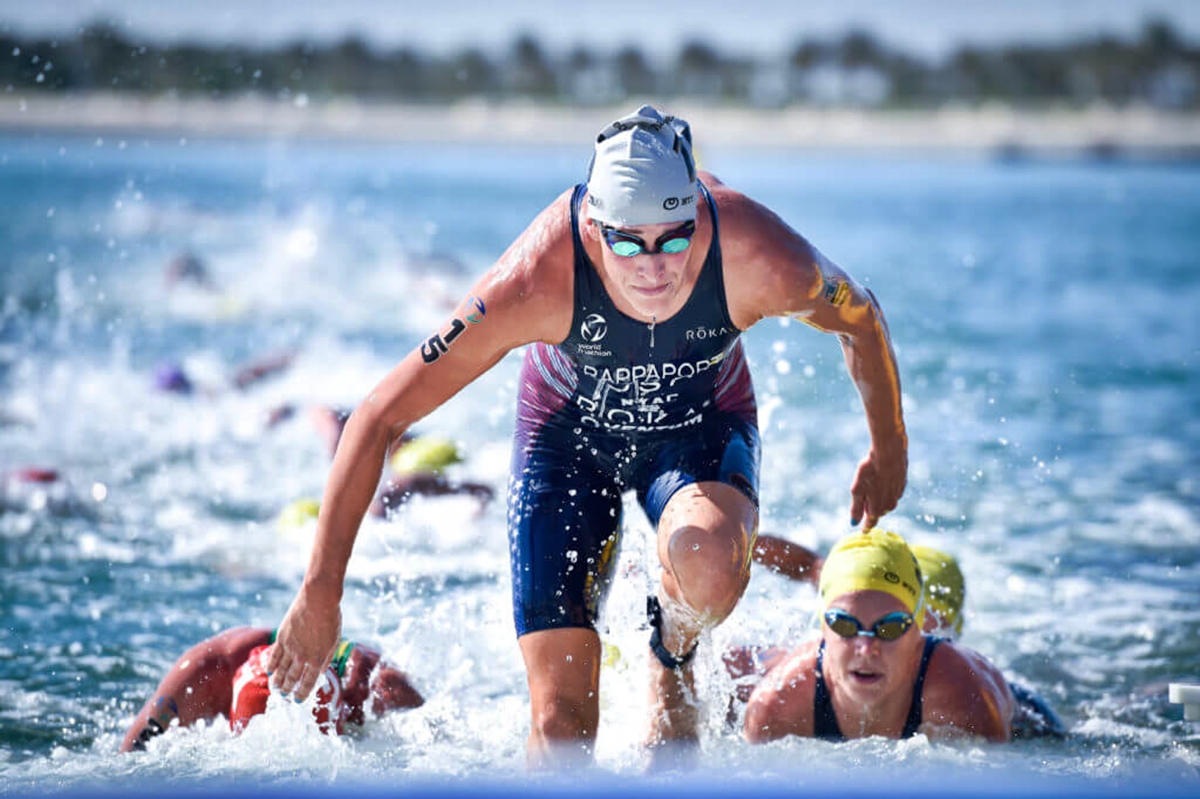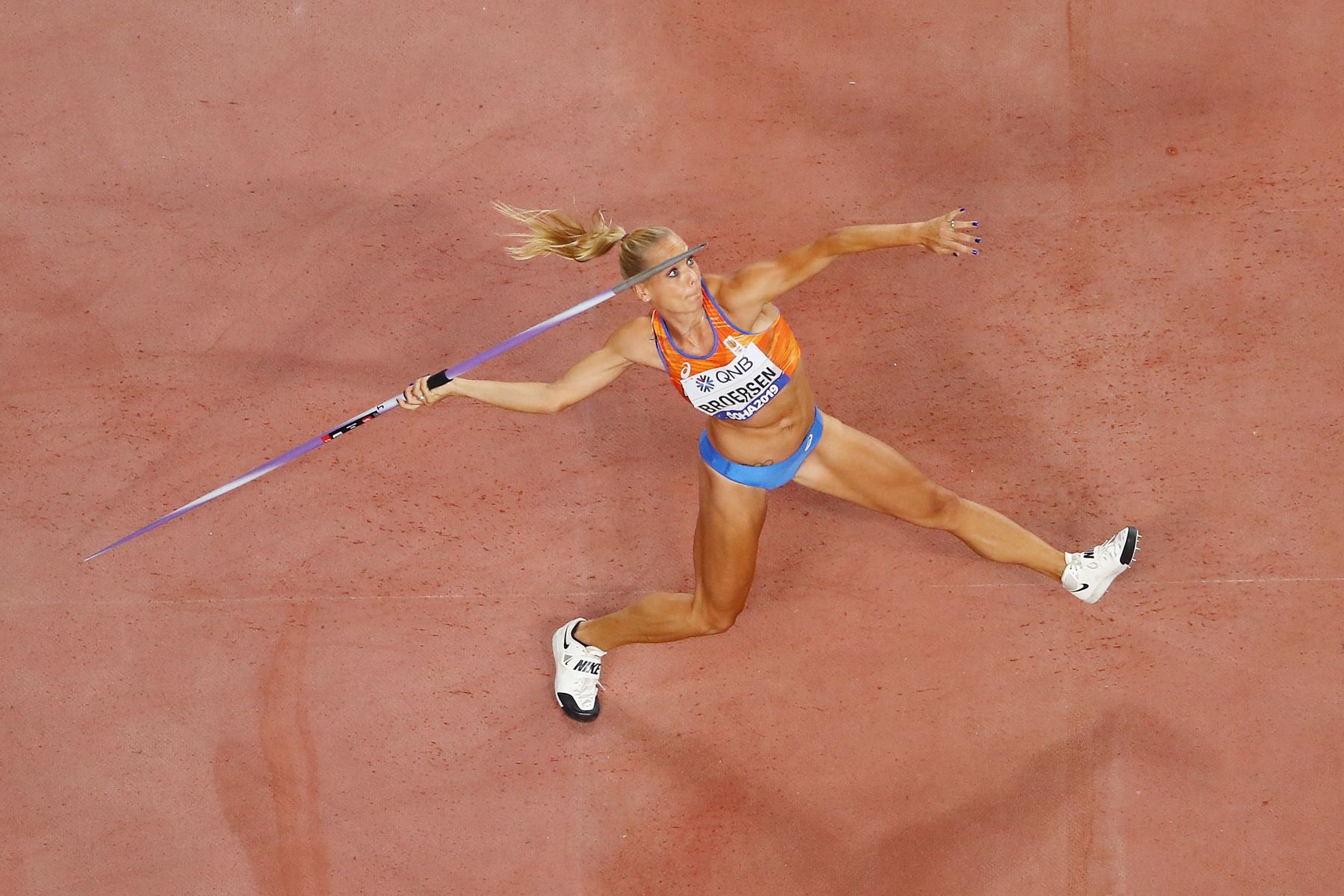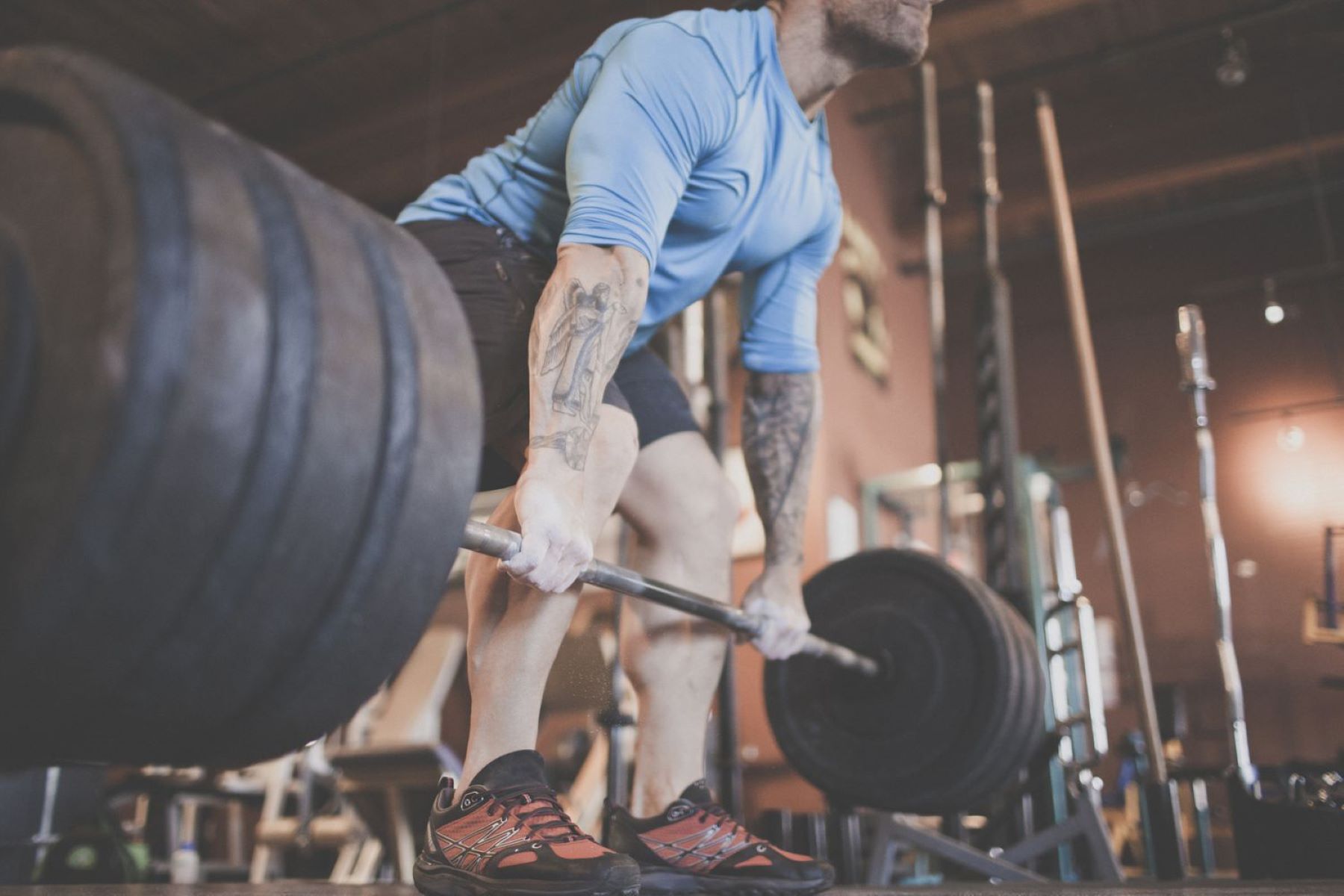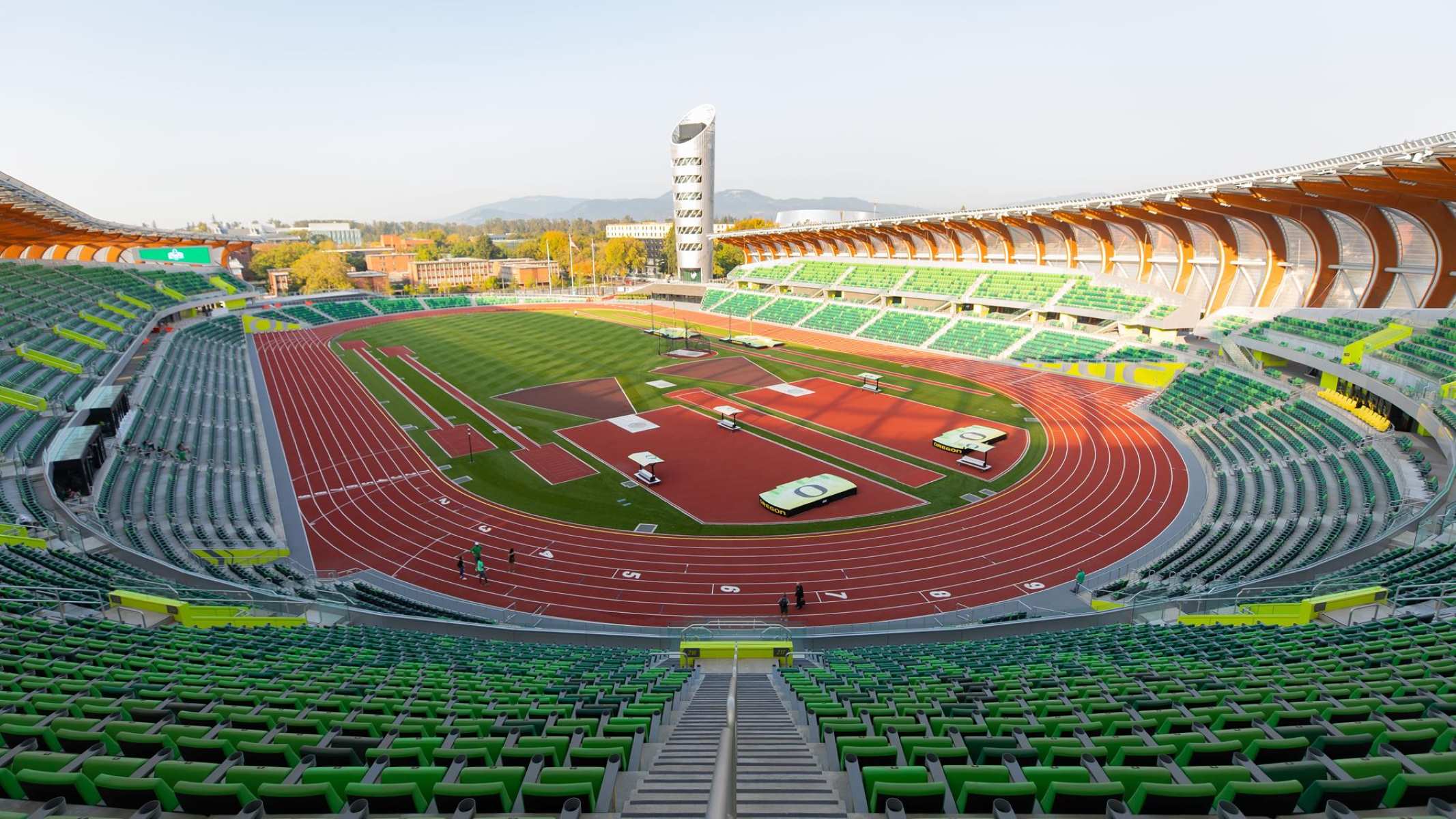Home>Misc>Featured>Athletic Performance Is Most Closely Related To Which Aspect Of Fitness?


Featured
Athletic Performance Is Most Closely Related To Which Aspect Of Fitness?
Modified: August 21, 2023
Discover which aspect of fitness is most closely related to athletic performance in our featured article.
Introduction
In the world of athletics, individuals strive to push their limits and reach their peak performance. Whether it’s running faster, jumping higher, or lifting heavier weights, athletes are constantly seeking ways to improve their abilities and achieve their goals. But what exactly determines athletic performance? In this article, we will explore the different aspects of fitness that have the greatest impact on athletic performance.
Athletic performance is not solely dependent on one specific aspect of fitness, but rather a combination of several key factors. These factors include cardiovascular endurance, muscular strength and power, speed and agility, flexibility, and body composition. Each of these aspects plays a crucial role in determining an athlete’s overall performance and can significantly influence their ability to excel in their chosen sport.
By understanding how each aspect of fitness contributes to athletic performance, athletes and coaches can develop targeted training programs to enhance specific areas of weakness and optimize performance. Whether you’re a sprinter, a basketball player, or a marathon runner, honing these different aspects of fitness can make a notable difference in your athletic abilities.
So, let’s dive deeper into each aspect of fitness and explore how they impact athletic performance.
Cardiovascular Endurance
Cardiovascular endurance is a critical component of athletic performance. It refers to the ability of the heart, lungs, and circulatory system to deliver oxygen and nutrients to the working muscles efficiently. Athletes with excellent cardiovascular endurance can sustain high-intensity activities for extended periods without fatigue.
Improved cardiovascular endurance allows athletes to maintain a high level of effort throughout a competition or training session, enabling them to outperform their opponents. It also facilitates faster recovery between bouts of intense activity, reducing the risk of fatigue and muscle exhaustion.
A variety of activities can help improve cardiovascular endurance, such as running, swimming, cycling, and aerobic exercises. These activities work the heart and lungs, strengthening them over time and improving their efficiency. Regular cardiovascular training not only enhances endurance but also promotes overall heart health and lowers the risk of cardiovascular diseases.
Athletes should incorporate both steady-state cardio exercises, like long-distance running or cycling, which target aerobic endurance, as well as interval training, which involves alternating between high-intensity bursts and recovery periods. Interval training improves both aerobic and anaerobic capacities, allowing athletes to perform at their best in multiple energy systems.
It’s important to note that cardiovascular endurance is sport-specific. For example, long-distance runners require high endurance levels, while sprinters must develop explosive power alongside adequate endurance to perform at their best during short bursts of intense activity.
A well-developed cardiovascular system not only enhances an athlete’s overall performance but also aids in recovery and reduces the risk of injuries. Therefore, athletes should prioritize cardiovascular endurance training as an essential component of their fitness regime.
Muscular Strength and Power
Muscular strength and power play a vital role in athletic performance. While endurance helps athletes maintain performance over a prolonged period, strength and power are crucial for explosive movements, quick bursts of energy, and overcoming resistance.
Muscular strength refers to the ability of muscles to exert maximum force against resistance. It is essential for sports that require pushing, pulling, lifting, or throwing. Improved muscular strength allows athletes to generate more force and excel in activities such as weightlifting, football, rugby, or wrestling.
Muscular power, on the other hand, is the ability to generate force quickly. It combines strength and speed to produce explosive movements. Power is crucial for sports like sprinting, jumping, and throwing, where rapid force production is necessary for optimal performance.
Strength and power can be developed through resistance training, including exercises such as weightlifting, plyometrics, and high-intensity interval training (HIIT). These forms of training improve neuromuscular coordination, enhance muscle fiber recruitment, and increase the force output of muscles.
It is important for athletes to focus on both absolute strength (maximum force) and relative strength (strength relative to body weight). While absolute strength is advantageous in sports like powerlifting, relative strength is more critical in activities where body weight is a factor, such as gymnastics or rock climbing.
Additionally, proper technique and form are essential when performing strength and power exercises to reduce the risk of injuries. Athletes should work with qualified strength and conditioning coaches to design personalized training programs that target specific muscle groups and movements relevant to their sport.
Enhancing muscular strength and power not only improves an athlete’s performance but also reduces the risk of injuries. Stronger athletes can withstand the demands placed on their bodies and maintain proper form during challenging movements, decreasing the likelihood of strains or sprains.
Ultimately, developing and maintaining muscular strength and power are crucial for athletes looking to maximize their potential and achieve peak performance in their respective sports.
Speed and Agility
Speed and agility are fundamental aspects of athletic performance, especially in sports that require quick movements, rapid changes in direction, or swift reaction times. Athletes who possess exceptional speed and agility have a competitive edge over their opponents.
Speed refers to the ability to move rapidly across a distance, while agility is the capability to change direction quickly and with precision. Both attributes are influenced by a combination of factors, including muscular strength, power, coordination, balance, and reaction time.
To improve speed, athletes can focus on exercises that enhance sprinting mechanics, such as strides, sprints, hill training, and plyometric drills. These exercises not only improve stride length and frequency but also optimize running technique and biomechanics.
Agility can be enhanced through drills that mimic sports-specific movements, including lateral shuffles, quick footwork, cone drills, and agility ladder exercises. These drills improve an athlete’s ability to change direction rapidly, react to visual or auditory cues, and maintain body control during rapid movements.
Incorporating speed and agility training into a comprehensive fitness program can have numerous benefits for athletes. It can improve acceleration, enhance top speed, and enable athletes to react more effectively in dynamic game situations. Furthermore, developing speed and agility can increase an athlete’s resistance to injury by promoting body control and proper movement mechanics.
It is important to note that different sports require different levels of speed and agility. For example, track and field athletes focus heavily on speed, while sports like soccer, basketball, or tennis require a combination of speed, agility, and quick reflexes to outperform opponents.
Training for speed and agility should be tailored to the specific requirements of the sport. This can be achieved by incorporating sport-specific drills and exercises, as well as considering the unique movement patterns and energy demands associated with the sport.
Overall, speed and agility are key determinants of athletic performance. By developing these attributes, athletes can gain a competitive advantage, react swiftly to game situations, and achieve their full potential in their chosen sport.
Flexibility
Flexibility is a crucial aspect of athletic performance that is often overlooked. It refers to the range of motion in a joint or group of joints and plays a vital role in preventing injuries, improving movement efficiency, and enhancing overall athletic performance.
Good flexibility allows athletes to move through a full range of motion without restrictions or limitations. It enables athletes to perform movements with ease, maintain proper form, and generate maximum force in their sport-specific actions.
A lack of flexibility can lead to muscle imbalances, reduced joint stability, and increased risk of musculoskeletal injuries. Tight muscles can restrict movement, decrease power output, and hinder overall performance. Therefore, improving flexibility is essential for athletes to optimize their athletic abilities.
Flexibility training should include a combination of static stretching, dynamic stretching, and mobility exercises. Static stretching involves holding a stretch for a prolonged period, while dynamic stretching incorporates movements that mimic the actions performed during exercise or sport. Mobility exercises focus on improving joint mobility and range of motion.
It is important to note that flexibility requirements can differ depending on the sport. For instance, gymnasts and dancers require exceptional flexibility, while other athletes may need to develop flexibility specific to their sport’s movements, such as rotational flexibility for golfers or shoulder flexibility for swimmers.
Regular flexibility training should be incorporated into an athlete’s training routine to improve joint mobility, reduce muscle tightness, and enhance overall movement quality. However, it’s crucial to strike a balance, as excessive flexibility can also have negative effects on performance and increase the risk of injury, especially in sports that require stability and strength.
Incorporating dynamic stretching and mobility exercises as part of the warm-up routine before training or competition can help prepare the muscles and joints for the demands of the sport. Static stretching, on the other hand, is more effective when performed during cool-down sessions to promote relaxation and reduce muscle soreness.
Overall, flexibility training is essential for optimizing athletic performance. By improving flexibility, athletes can enhance their range of motion, movement efficiency, and injury resistance, enabling them to perform at their best in their chosen sport.
Body Composition
Body composition plays a significant role in athletic performance. It refers to the proportion of fat, muscle, and other tissues in the body. The distribution of these components can have a profound impact on an athlete’s ability to excel in their sport.
An optimal body composition, characterized by a higher muscle mass and a lower body fat percentage, is typically associated with improved athletic performance. More muscle mass allows athletes to generate greater force and power, while a lower body fat percentage can enhance speed, agility, and overall endurance.
Achieving and maintaining an ideal body composition requires a combination of proper nutrition, regular exercise, and effective training strategies. Athletes should focus on consuming a well-balanced diet that supports muscle growth and repair while enabling them to maintain a lean physique.
Strength training is crucial for building lean muscle mass, as it helps increase metabolism, burn calories, and improve body composition. Incorporating resistance exercises, such as weightlifting, bodyweight exercises, or functional training, can contribute to the development of a strong and functional physique.
Cardiovascular exercises, such as running, swimming, or cycling, can aid in reducing body fat and improving cardiovascular health. HIIT workouts, which combine high-intensity bursts with short recovery periods, are particularly effective in maximizing calorie burn and improving body composition.
It’s important for athletes to be mindful of body composition goals while maintaining a healthy and sustainable approach. Extreme weight loss or rapid changes in body composition can have negative implications on performance, health, and overall well-being.
Body composition goals can also vary depending on the specific sport or position. For instance, a sprinter may prioritize building explosive power and maintaining a lean physique, while a shot putter may focus on increasing overall strength and muscle mass.
Monitoring body composition through methods like body fat percentage measurements and tracking changes in muscle mass and fat mass can provide valuable insights into an athlete’s progress and help refine training and nutrition strategies.
By optimizing body composition, athletes can improve their power-to-weight ratio, enhance their speed and agility, and optimize overall athletic performance.
Conclusion
Athletic performance is a complex interplay of various fitness components, each contributing to an athlete’s ability to excel in their sport. Cardiovascular endurance, muscular strength and power, speed and agility, flexibility, and body composition all play critical roles in determining an athlete’s overall performance.
Cardiovascular endurance is essential for sustaining high-intensity activities and promoting faster recovery between bouts of exercise. Muscular strength and power enable athletes to generate maximum force and perform explosive movements. Speed and agility are crucial for quick movements, rapid changes in direction, and swift reaction times. Flexibility enhances range of motion, movement efficiency, and reduces the risk of injuries. Finally, optimal body composition, with higher muscle mass and lower body fat percentage, is associated with improved athletic performance.
To achieve peak performance, athletes should prioritize training and developing these aspects of fitness. This can be achieved through targeted exercises, proper nutrition, and well-designed training programs. Additionally, it is vital for athletes to consider the specific requirements of their sport or position.
While enhancing individual fitness components is essential, it’s important to remember that athletic performance is a holistic concept. These aspects of fitness are interconnected and should be developed in harmony to achieve optimal results.
By focusing on improving cardiovascular endurance, enhancing muscular strength and power, honing speed and agility, maintaining flexibility, and optimizing body composition, athletes can reach their full potential and excel in their chosen sport.
Remember, success in athletics is not solely defined by one aspect of fitness, but rather the synergy of all these components working in harmony. So, train smart, prioritize these aspects, and watch your athletic performance soar to new heights!


